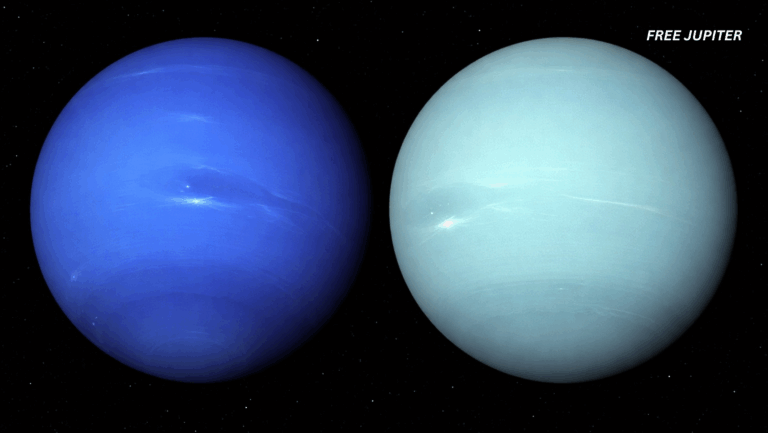When most people think of ice, it feels like one of the simplest, most ordinary things in nature. It’s the stuff that makes sidewalks dangerously slick in winter, keeps our summer drinks cold, and towers in the form of glaciers in faraway polar regions. We admire it for its beauty and usefulness, but few of us would describe ice as thrilling or high-tech. For centuries, scientists mostly viewed ice as a passive material—frozen water with interesting shapes and patterns, but nothing particularly groundbreaking beyond its role in climate and ecosystems.
Now, that view is starting to change. Researchers have discovered that ice is hiding a surprising “superpower”: the ability to generate electricity. This isn’t electricity in the same way you’d get from a power plant or a lightning bolt, but rather a hidden property inside the structure of ice itself. By bending or stressing ice in certain ways, scientists found it can release tiny electrical charges. And when salt gets involved, the effect doesn’t just grow stronger—it multiplies dramatically, suggesting that ice may have a far more active role in natural phenomena than we ever imagined.
The Science of Flexoelectricity
Researchers recently discovered that ice is what’s known as flexoelectric—a fancy term meaning it produces an electric charge when it bends, twists, or deforms. That’s different from the more widely known piezoelectric effect, where crystals like quartz create electricity when squeezed.
Now, before you picture bending your freezer’s ice cubes into tiny batteries, keep in mind: solid ice blocks won’t do the trick. The effect only shows up when ice exists in very thin sheets. That’s what physicist Xin Wen and his team at Xi’an Jiaotong University in China demonstrated.
And here’s where things get juicier—when the researchers tried this with salty ice, the electrical output didn’t just increase; it skyrocketed, producing a charge up to a thousand times stronger than plain ice.
Read more: Tesla Dreamed It—Now Wireless Electricity Is Closer To Reality Than Ever
From Thunderclouds to Lightning
We’ve long known that glaciers colliding or ice sheets cracking can release electricity, but this was thought to be because of massive amounts of stress. What Wen’s team found is that ice itself carries this ability—even in tiny amounts.
To test the idea, they recreated what happens in storm clouds: small ice particles crashing into larger ones. The results were strikingly similar to natural lightning. This hints that flexoelectricity in ice could play a role in the wild bolts of electricity we see in thunderstorms.
Lightning, it turns out, might owe part of its spark to ice’s hidden electrical personality.
Salt: Nature’s Supercharger
Here’s where it gets even more fascinating: when salt enters the picture, ice transforms from a shy spark into a full-blown electrical powerhouse.
In Wen’s experiments, sheets of ice with about 25% salt released charges not just stronger than regular ice, but a million times more powerful than salt alone. The reason? As the ice bends, its water molecules, ions, and salt molecules shift unevenly, creating a streaming current of charge.
Because ice is polycrystalline (made of different crystal structures mashed together), there are plenty of tiny pathways for ions to travel. The thin film of meltwater that coats ice further helps by separating positive and negative ions—like a microscopic battery in action.
This process is called streaming flexoelectricity, and scientists think it could have big implications for renewable energy.
Ice Power: A Future Energy Source?
Here’s a mind-bending thought: about 10% of Earth’s surface is covered in ice, and a large portion of it is salty. Beneath glaciers, meltwater already carries ions that move around as ice flows and drains. This means Earth’s frozen regions might secretly be generating untapped electricity.
Imagine harnessing that energy as a sustainable power source. While we’re not about to build ice-powered cities tomorrow, the discovery nudges us closer to the possibility of “ice energy.”
Beyond Earth: Ice Worlds and Alien Chemistry
The study’s implications don’t stop with our planet. Many icy moons in the solar system—like Jupiter’s Europa or Saturn’s Enceladus—are covered in thick shells of salty ice over liquid oceans.
If flexoelectricity happens there too, it could influence more than just electrical activity. Some scientists suggest the effect might even contribute to prebiotic chemistry—the early chemical reactions that lead to life. On Europa, for example, ice-generated electricity might fuel the creation of complex organic molecules.
In other words, the same quirky property that might help light up thunderstorms on Earth could also play a role in sparking life on distant worlds.
Related Curiosities
- Snowstorms and Static Shocks
Ever rubbed your socks on a carpet and zapped yourself on a doorknob? That’s static electricity. Something similar happens in snowstorms, where particles of ice and snow collide, building up charges that sometimes discharge dramatically. - Piezoelectric vs. Flexoelectric
While piezoelectricity is already used in everyday things like lighters, microphones, and even guitar pickups, flexoelectricity has flown under the radar because it usually requires very thin materials. Ice has just brought this hidden effect into the spotlight. - Glacier Quakes
Scientists studying glaciers have found that the stress and cracking of massive ice sheets release not just sound waves (which resemble earthquakes) but also bursts of electricity. The discovery of flexoelectricity helps explain how these phenomena might be connected.
Scientists discover that bending ice generates electricity and explains lightning
Read more: The Amount of Electricity Now Being Generated From Solar Is Unbelievable
Final Thoughts
Ice isn’t just frozen water; it’s a quiet powerhouse with the ability to bend, shift, and spark electricity. With salt boosting its strength, the discovery of streaming flexoelectricity opens new doors in both science and imagination.
On Earth, it hints at new sustainable energy sources hiding in frozen landscapes. Beyond Earth, it could shape how we think about alien oceans, lightning storms, and even the first sparks of life on other worlds.
So next time you drop a cube of ice into your drink, remember: it may seem ordinary, but in the right conditions, ice has a superpower waiting to be unleashed.
Featured image: Freepik.
Friendly Note: FreeJupiter.com shares general information for curious minds. Please fact-check all claims and double-check health info with a qualified professional. 🌱










